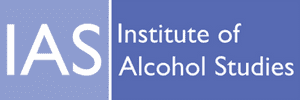Introducing minimum unit pricing in England would be up to 50 times more effective at tackling problems caused by alcohol than the government’s recent policy of a ban on below cost selling, finds a study published in the British Medical Journal (BMJ).
Using a mathematical model alongside General Lifestyle Survey data, researchers at the University of Sheffield estimated changes in alcohol consumption, spending, and related health harms among adults for 2014-15.
The population was split into subgroups of moderate, hazardous, and harmful drinkers, according to weekly consumption guidelines.
The team estimated that below cost selling will increase the price of just 0.7% of alcohol units sold in England, whereas a minimum unit pricing of 45p would increase the price of 23.2% of units sold.
Below cost selling will reduce harmful drinkers’ mean annual consumption by just 0.08%, around three units per year, compared with 3.7% or 137 units per year for a 45p minimum unit price (an approximately 45 times greater effect).
The ban on below cost selling has a small effect on population health, they add – saving an estimated 14 deaths and 500 admissions to hospital per year. In contrast, a 45p minimum unit price is estimated to save 624 deaths and 23,700 hospital admissions.
Despite some study limitations, the authors say they found “very small estimated effects for banning below cost selling” and showed, in comparison, “that a minimum unit price of 45p would be expected to have 40-50 times larger reductions in consumption and health harms.”
Please follow the link to the editorial ‘Minimum unit pricing for alcohol’ which accompanies the study published in the BMJ on 30 September 2014.
The study ‘Potential benefits of minimum unit pricing for alcohol versus a ban on below cost selling in England 2014’ is available to view here: http://www.bmj.com/cgi/doi/10.1136/bmj.g5452
